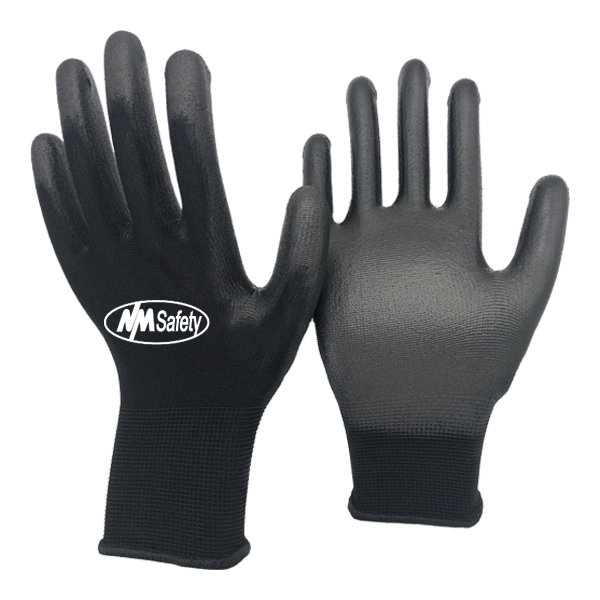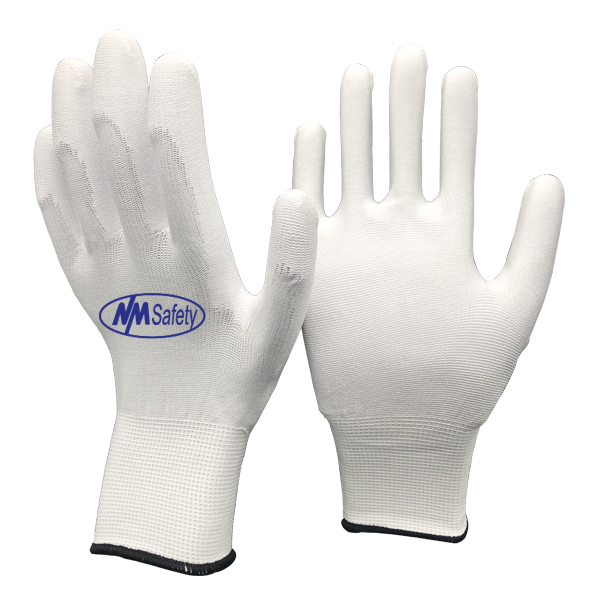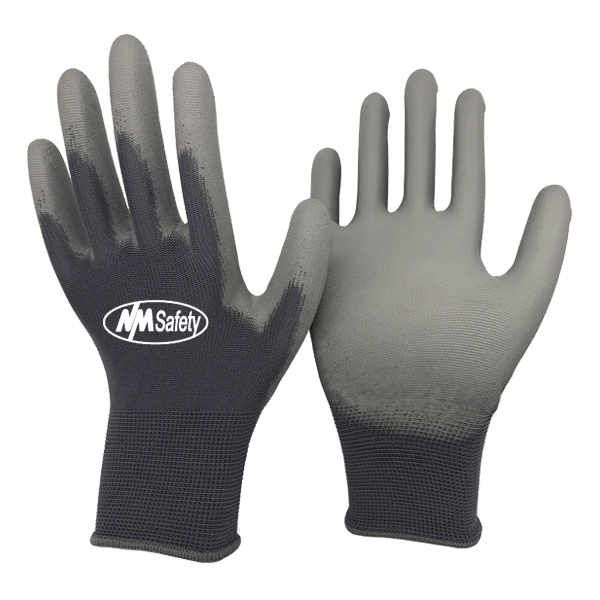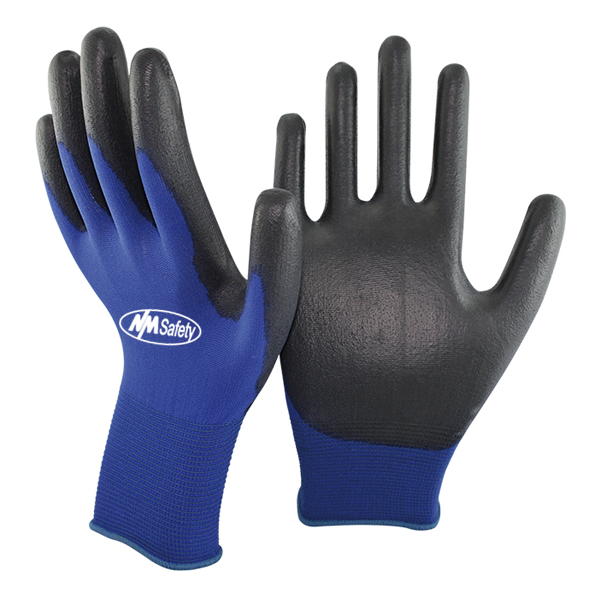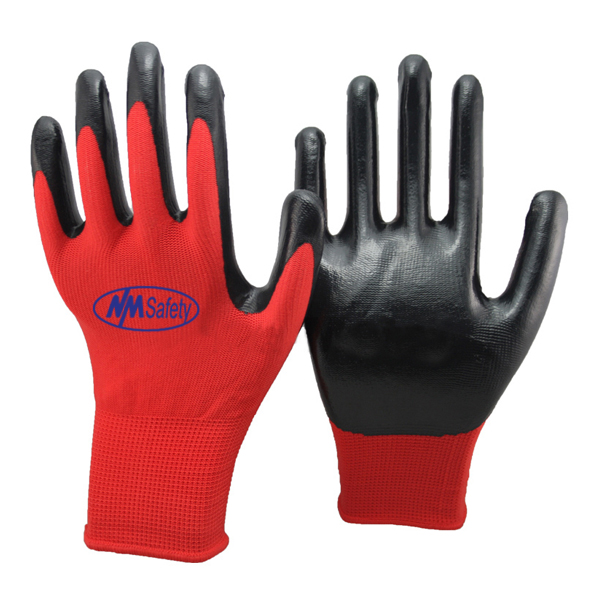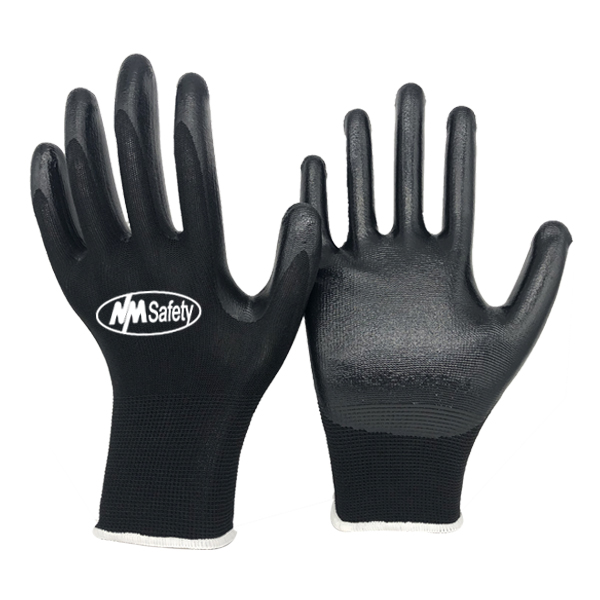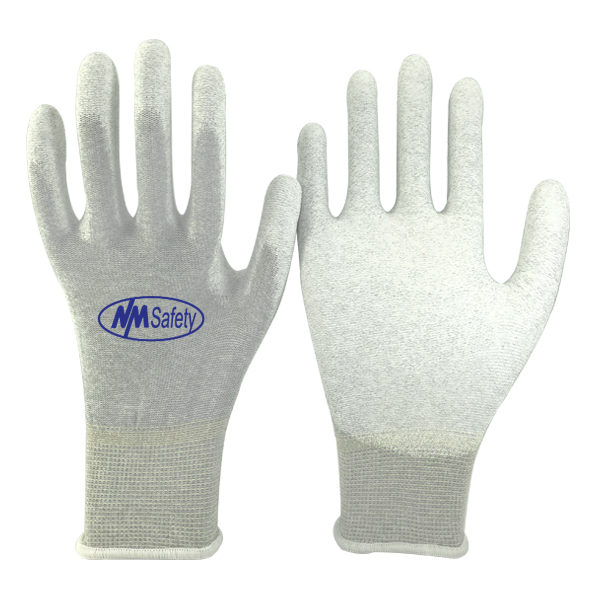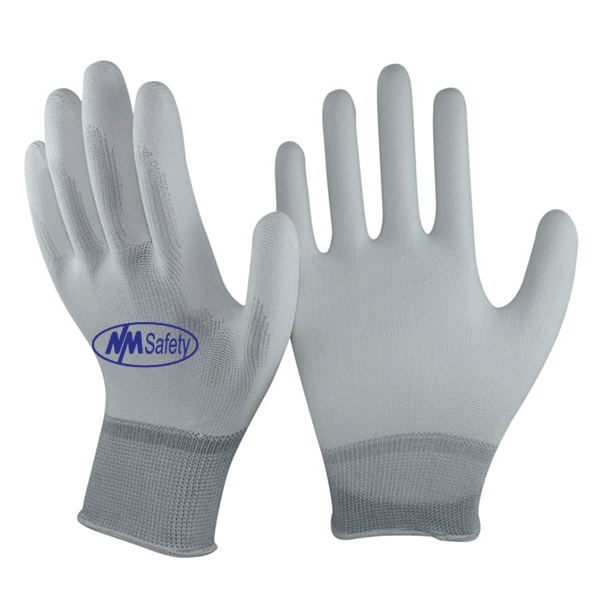Background of Nylon: Nylon is a thermoplastic synthetic polymer developed by DuPont that was initially used in a nylon-bristled toothbrush in 1938, and then in women's stockings in 1940. Nylon output was shifted to the military for use in parachutes and parachute ropes as history marched into World War II.
Characteristics of Nylon: Nylon fibers are also great for making lightweight labor gloves because of their suppleness and comfort. Nylon fibers are common in cut resistance gloves because they are easier to dye. The nylon is wrapped around tougher cut-resistant fibers like glass or steel. Nylon work gloves, which are stronger and more comfortable than polyester, have become the go-to lightweight work glove for applications requiring dexterity but more protection than a disposable.
Applications for Nylon Gloves: Inspectors' gloves and PU-coated gloves or Nitrile dipped work gloves are two of the most common lightweight nylon work gloves. Other general-purpose gloves, such as leather palm or cotton gloves, have been superseded by nylon gloves. These lightweight work gloves are great for precision and delicate work that yet requires protection, such as electronics, laboratory work, semiconductors, pharmaceuticals, and other exact tasks.
Nylon gloves, which are low lint and more durable than cotton string-knit gloves, are well suited for these operations since they require complete cleanliness and no fingerprint contamination. These properties make nylon work gloves perfect for cleaning, handling, and assembling small items, instrument parts, and other tasks where fingerprint contamination is a concern.
White inspector's gloves are the most frequent nylon work gloves since their low-linting quality makes them perfect for inspections. Because of their white hue, pollutants are immediately evident when inspected. Nylon work gloves in black and gray disguise dirt and have some durability, whereas nitrile or polyurethane dips provide superior grip in oily circumstances.
What Exactly Does "Palm Coated Gloves" Mean? Protective material is coated on the palms of palm-coated gloves, which are PU flex gloves. The level of protection supplied is determined by the type of material employed; for example, nitrile gloves provide more protection than PVC gloves.
What are polyurethane-coated gloves?: PU-coated gloves, also known as polyurethane-coated gloves, are a type of personal protective equipment (PPE) glove designed for tasks that require precision, dexterity, and sensitivity. They're comprised of polyurethane foam with a nylon liner that protects your hands from abrasion and chemicals while remaining comfortable and lightweight.
What is polyurethane exactly, and how does it work? Polyurethane is a common type of polymeric polymer with a variety of applications, such as an adhesive as a material for gloves and other clothing. By adding catalysts, blowing agents, and flame retardants to the chemical makeup of polyurethane, it may be formed into a variety of shapes.
What are the benefits of wearing gloves with a PU coating? PU-coated gloves have a number of advantages that make them useful in a variety of industries and jobs. Listed below are a few examples:
Stretch: Due to the elasticity of polyurethane, PU Grip Gloves are ideal for jobs that require a high level of sensitivity and dexterity. Even when stretched, the material protects the individual, something that most other flexible materials can't do.
Hold: Another important benefit of PU-coated gloves or PU Grip Gloves is their improved grip. Wearers have more grip while maintaining protection and flexibility because of the material's characteristics.
Purchasing cost: Finally, the manufacturing and purchasing costs of these gloves are quite low. Due PU-coated gloves must be replaced on a regular basis, this is a tremendous benefit for both enterprises and employees. However, because of their low cost, this isn't a major worry.
What Are the Benefits of Using Coated Gloves? Coated gloves have a protective coating that covers your entire arm, including your five fingers. This extra layer of protection improves cut, abrasion, and snag resistance. Chemicals, oils, and other pollutants that could obstruct your operations or cause skin irritation are also kept at bay. Your dexterity improves when you wear coated gloves. You'll get a better grip and the gloves will last a little longer than regular latex gloves. This also allows your top arm to breathe and be comfortable while performing all of the tasks you've been assigned.
Most employees and businesses prefer PU-coated gloves for reasons other than the level of protection they give.
Protection: The thickness of your gloves is directly linked to the level of protection they give. As a result, it's something to consider while purchasing gloves. The glove thickness determines the likelihood of chemicals leaking through or a sharp object reaching your hand. Nitrile gloves are improved by dipping them in the coating solution many times. This guarantees that the thickness is suitable and comfortable for you to carry out your duties. This allows them to maintain their little stature without endangering you. How you handle gloves and whether you follow the safety rules set forth by your industry determine whether or not you stay safe at work.
Production Methods: Dipped gloves are made differently than leather gloves. It also changes depending on the glove coating type. The liner is the first stage in each of the three basic coating types. Things start to become intriguing at this stage.
Gloves made of polyurethane are only dipped in the coating once, allowing the coating to penetrate the entire glove (making it a bit thinner than other types).
Latex gloves are coated with an anti-penetration chemical before being dipped in latex. If they have a wrinkled palm, the final step is to dip them in coagulate. To give them a foam appearance, nitrile micro-foam gloves are dipped in nitrile and then sprayed with a shower.
Nitrile gloves are being soaked in the sand, next micro-foam nitrile, and finally salt. After that, they're rinsed to remove the salt, which reacts with the foam and gives them a sand-like texture.
Conclusion: Work gloves have come a long way since the turn of the century. The method we protect our hands has changed drastically as a result of new technologies, and the materials we use to do so have evolved dramatically as well. A flexible liner with a palm, 3/4, or full glove coating protects against moisture, oil, abrasion, cuts, and heat. This page just mentions the glove covering. There are numerous various glove coatings to choose from, but the most common are latex, nitrile, and polyurethane. Each coat comes with its own set of benefits.






